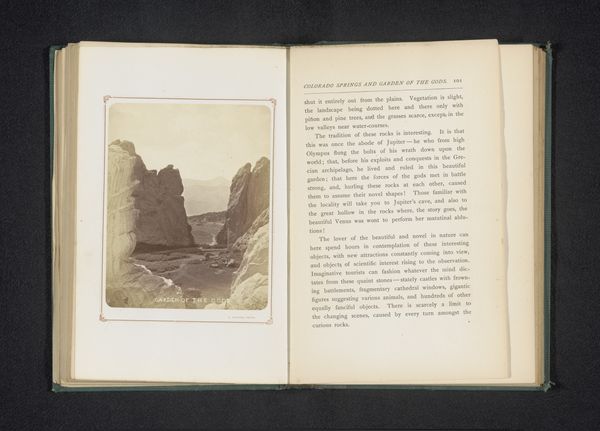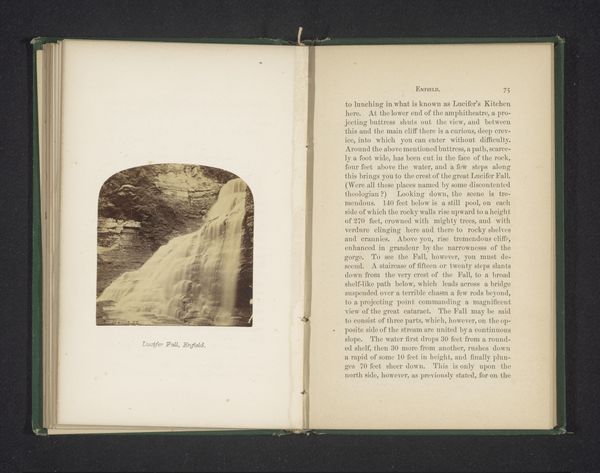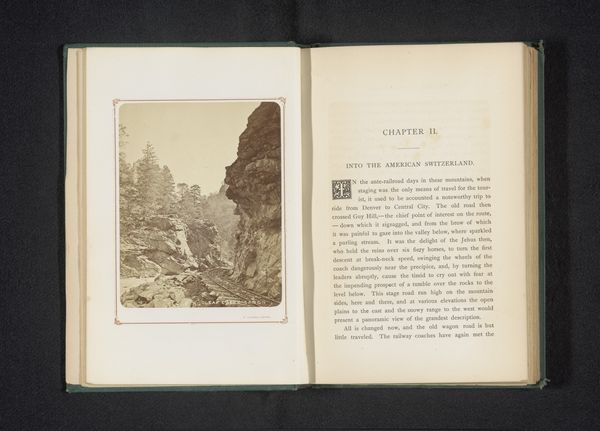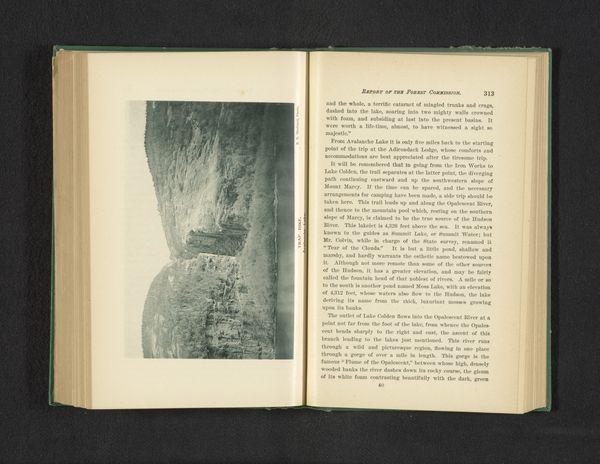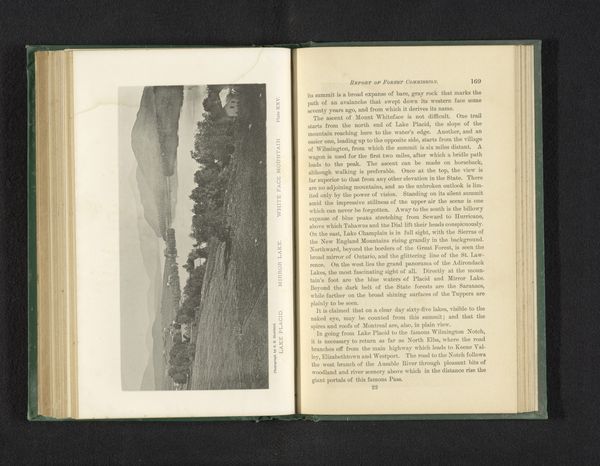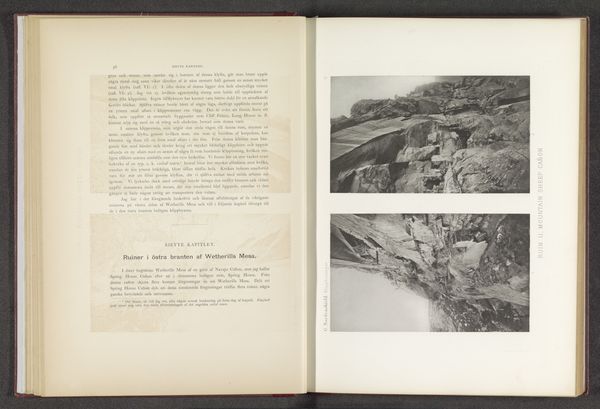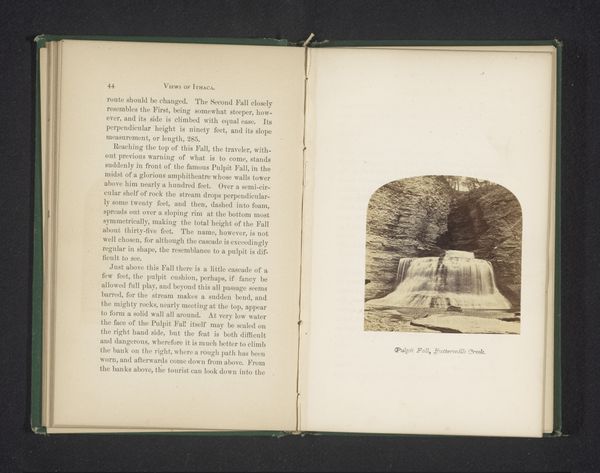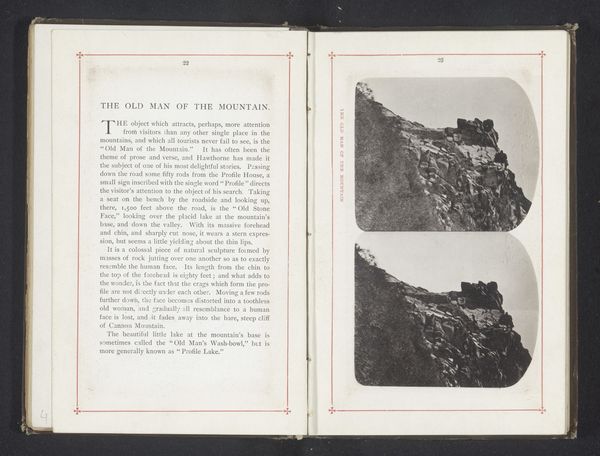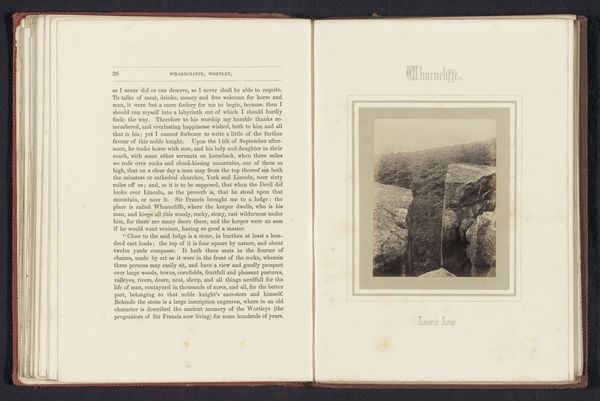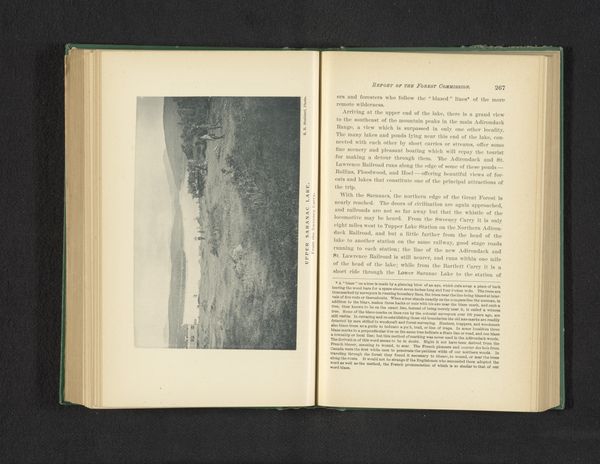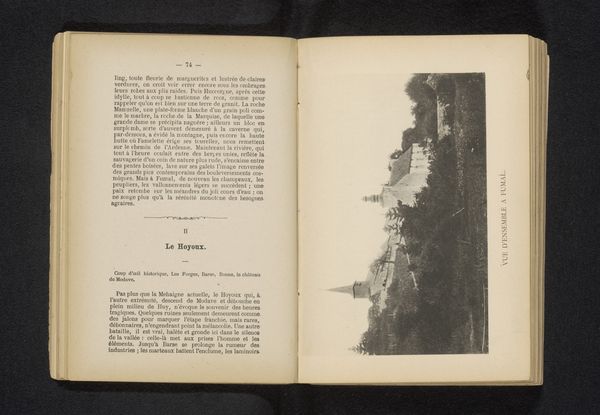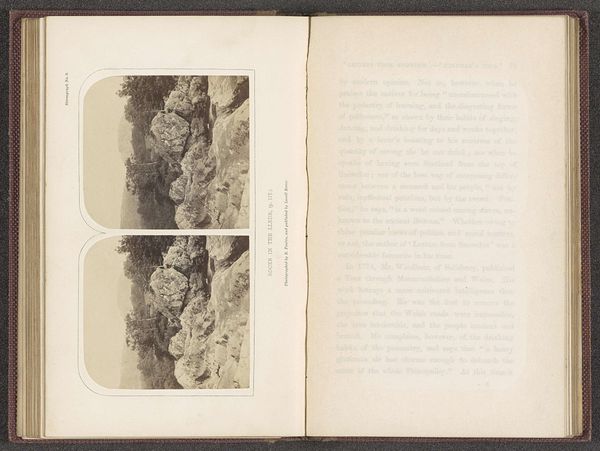
print, photography, gelatin-silver-print, albumen-print
#
aged paper
#
still-life-photography
#
homemade paper
#
paperlike
# print
#
landscape
#
paper texture
#
photography
#
personal sketchbook
#
journal
#
fading type
#
gelatin-silver-print
#
hudson-river-school
#
thick font
#
albumen-print
#
historical font
#
columned text
Dimensions: height 80 mm, width 78 mm
Copyright: Rijks Museum: Open Domain
Curator: This gelatin silver print, taken sometime before 1869, is titled *Tower Rock, Lake Shore*, attributed to J.C. Burritt. What strikes you initially? Editor: Well, first, the sepia tone lends a wistful quality. It's as if we're looking through time, and this odd rock formation, dominating the frame, is a solemn reminder of nature’s enduring power and strange beauty. It reminds me of land art photography. Curator: It certainly captures a sublime vision, doesn't it? Considering it through a historical lens, it's likely a product of the Hudson River School aesthetic—an appreciation for dramatic American landscapes. This image, presented within an album or journal, reveals how those ideals were curated and consumed. The printed text on the right-hand page highlights a journey of leisure and discovery that catered to privileged easterners venturing into what was, at the time, considered a vast American wilderness. Editor: Wilderness, though, often presented as this "empty" space, but really it involved indigenous dispossession and erasure. That this photograph might romanticize this rugged landscape without addressing those power dynamics seems quite telling. And notice the deliberate composition, too—the framing of the rock and the softness of the light seem staged, not spontaneous. The composition flattens what may have been violent historical undercurrents. Curator: That reading underscores a crucial point about landscape photography. The very act of capturing a landscape transforms it into a commodity and reinforces particular ways of seeing that landscape. Consider, too, the impact of tourism and how this image, within the larger context of a journal or album, served as both souvenir and a testament to a certain kind of cultural capital. Owning or experiencing the depicted scene translated to possessing a specific status. Editor: It is, indeed, a layered artifact, embodying tensions between aesthetics, representation, and socio-political contexts. Thinking about how we interpret such images, now, really brings those latent elements into relief. Perhaps, it’s not just the image that evolves, but our ethical engagement with its content that matters most. Curator: Absolutely, revisiting this photograph today through contemporary lenses pushes us to re-examine its historical baggage and consider the unacknowledged power relations inscribed within its idyllic image of the natural world.
Comments
No comments
Be the first to comment and join the conversation on the ultimate creative platform.

